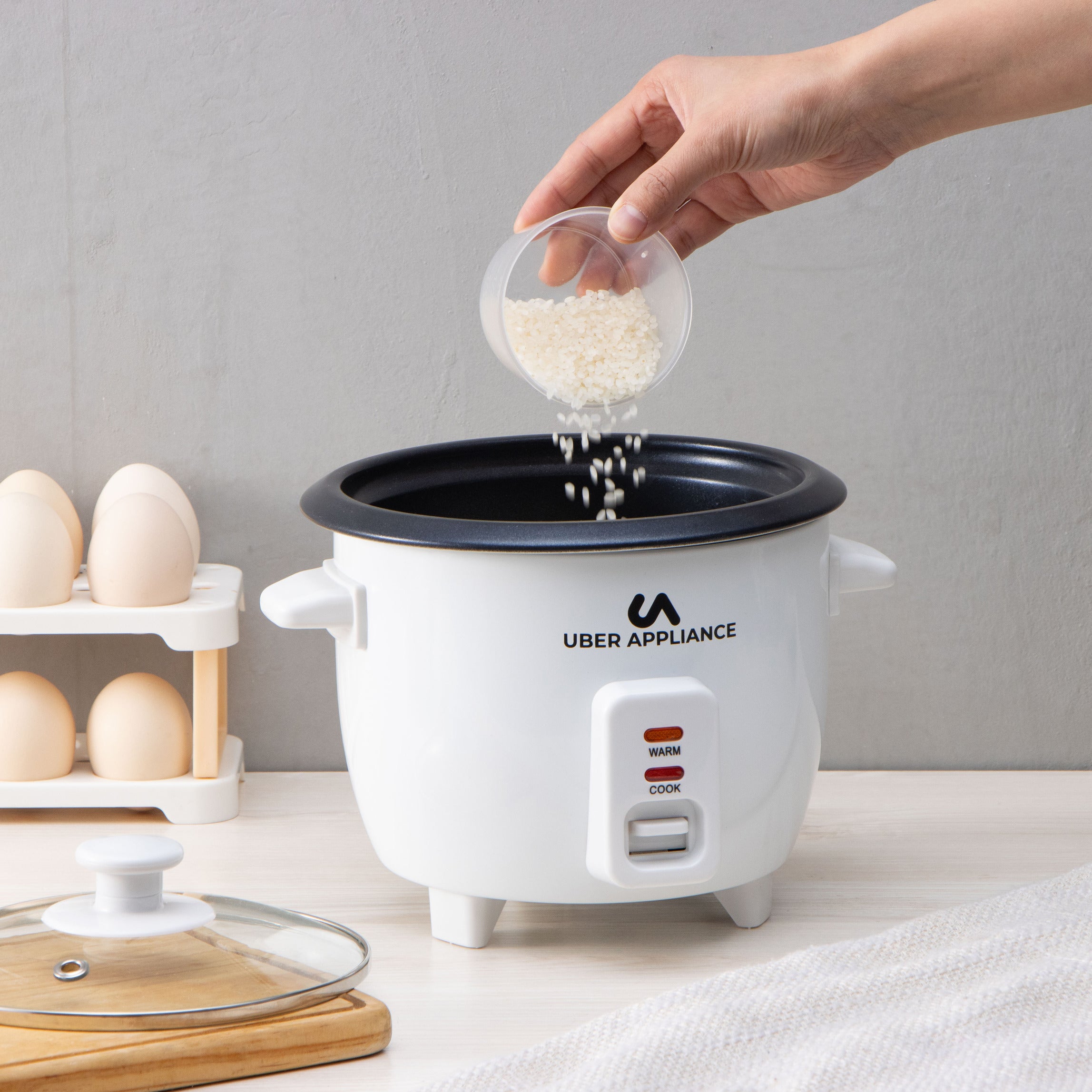Rice cookers are a staple in many kitchens, loved for their convenience and ability to produce perfectly cooked rice with minimal effort. But like any appliance, they need regular cleaning and maintenance to perform optimally. Without proper care, residue and buildup can accumulate, which can affect the taste of your food, shorten the lifespan of your rice cooker, and even lead to safety concerns.
In this comprehensive guide, we'll cover everything you need to know about cleaning your rice cooker properly. From step-by-step instructions to troubleshooting common issues, you'll find all the tips you need to keep your appliance in top shape.
Why Regular Cleaning Is Essential for Your Rice Cooker
Maintaining a clean rice cooker isn't just about keeping it looking good; it's about ensuring that it continues to work effectively. Over time, starch, food particles, and moisture can build up inside your rice cooker. These residues can cause several problems:
- Reduced Efficiency: A buildup of residue can interfere with the rice cooker's heating elements, leading to uneven cooking. You may end up with undercooked or burnt rice, defeating the purpose of using the appliance.
- Shortened Lifespan: Regular cleaning helps prevent rust, corrosion, and electrical issues, which can extend the lifespan of your appliance.
- Food Safety: If food residue is left inside, it can harbor bacteria or mold, especially if moisture is present. This can lead to unpleasant odors and even contaminate your food.
- Maintaining Non-Stick Surfaces: Many rice cookers come with a non-stick inner pot, which needs special care to prevent scratches and damage. Proper cleaning techniques will keep it intact for longer, ensuring your rice doesn’t stick.
Step-by-Step Guide to Cleaning Your Rice Cooker
Proper cleaning doesn't have to be a hassle. Here’s a detailed breakdown of how to clean each part of your rice cooker:
-
Unplug and Allow to Cool
Before you begin cleaning, make sure the rice cooker is unplugged and completely cool. This is essential for safety and to protect the appliance from damage. Never attempt to clean a hot rice cooker as you could burn yourself or damage its components.
-
Cleaning the Inner Pot

The inner pot is where most of the food residue accumulates, so it needs special attention:
- Step 1: Remove the inner pot and fill it with warm, soapy water. Let it soak for about 10-15 minutes. This helps loosen any food particles stuck to the surface.
- Step 2: Using a soft sponge or non-abrasive cloth, gently scrub the inner pot. Avoid using steel wool or harsh scrubbing pads, as they can damage the non-stick coating.
- Step 3: Rinse thoroughly with clean water to remove any soap residue. Soap left behind can affect the taste of your rice.
- Step 4: Dry the inner pot with a soft cloth or let it air dry completely before placing it back in the rice cooker.
Pro Tip: To prevent rice from sticking in the future, lightly coat the inner pot with a small amount of vegetable oil before cooking.
-
Cleaning the Lid

The lid of your rice cooker can accumulate steam, food splatters, and even grease over time. Proper cleaning is important to avoid unpleasant odors and ensure efficient cooking.
- For Removable Lids: If your rice cooker has a detachable lid, remove it and wash it in warm, soapy water. Use a soft brush or sponge to clean any crevices. Rinse thoroughly and dry completely before reattaching.
- For Non-Removable Lids: Use a damp cloth or sponge to wipe down the interior surface of the lid. For stubborn stains or residue, use a mixture of water and vinegar for extra cleaning power.
Cleaning the Steam Vent: Most rice cookers have a steam vent to release pressure during cooking. Over time, steam vents can get clogged with starch and residue. Clean the vent using a soft brush, toothpick, or pipe cleaner to ensure proper airflow.
-
Cleaning the Steam Vent and Condensation Collector
The steam vent and condensation collector are often overlooked during cleaning, but they play a vital role in maintaining your rice cooker’s performance.
- Steam Vent: If your model has a removable steam vent, detach it and soak it in warm, soapy water for 5-10 minutes. Rinse and dry thoroughly before reattaching.
- Condensation Collector: This part collects excess moisture to prevent water from dripping onto your countertop. Remove it, rinse it under warm water, and let it air dry. Regularly empty and clean the condensation collector to avoid mold buildup.
-
Drying and Reassembling Your Rice Cooker
To avoid rust and electrical damage, it’s crucial to dry all parts completely before reassembling your rice cooker.
- Step 1: Use a soft cloth to dry all removable parts, paying extra attention to areas where water might accumulate, such as the steam vent and condensation collector.
- Step 2: Leave the components out to air dry for an additional 10-15 minutes before putting them back together.
- Step 3: Ensure the inner pot, lid, and other components are completely dry before plugging in the rice cooker to avoid short-circuiting.
-
Troubleshooting Common Issues
Even with proper maintenance, you may occasionally encounter problems like stuck-on rice or burnt residue. Here’s how to resolve these issues:
- Stuck-on Rice
- Fill the inner pot with a solution of equal parts water and white vinegar. Let it soak for at least 30 minutes. The acidity of the vinegar helps dissolve tough residue.
- After soaking, use a soft sponge to gently scrub the pot. Rinse thoroughly and dry.
- Burnt Residue on the Heating Plate
- Unplug the rice cooker and let it cool down completely.
- Use a soft, damp cloth with a bit of vinegar to wipe the heating plate. Avoid using too much liquid, as it can seep into the electrical components.
- For stubborn spots, use a soft brush to gently clean the surface. Do not use harsh cleaners or metal scrubbers.
Important: Never immerse the rice cooker base in water, as it contains electrical wiring that can be damaged.
-
Pro Tips for Preventing Sticking and Build-Up
Here are some additional tips to keep your rice cooker clean and efficient:
- Rinse Your Rice: Before cooking, rinse your rice thoroughly to remove excess starch, which can cause sticking and residue.
- Use Oil: Add a few drops of oil to the inner pot before cooking to create a barrier that prevents sticking.
- Clean Promptly After Use: Letting rice and residue sit can make them harder to remove. Clean the inner pot immediately after it cools down.
Conclusion
Cleaning your rice cooker regularly is essential to ensure it functions properly and lasts for years. By following the simple steps outlined in this guide, you can keep your appliance in top shape, prevent sticking, and enjoy perfectly cooked rice every time.
With these maintenance tips, you’ll extend the life of your rice cooker and ensure it always produces delicious results. So, make cleaning a regular part of your cooking routine—you’ll thank yourself later!
If you’re looking to upgrade your rice cooker or explore more countertop appliances, check out the range of products offered by Uber Appliance. From versatile air fryers to efficient mini fridges, we have everything you need to make your kitchen life easier.






Leave a comment